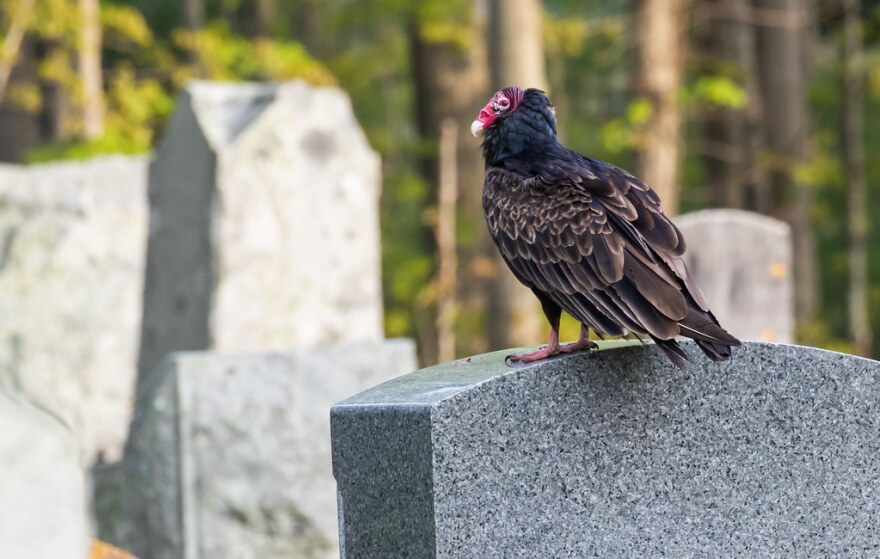Though it’s been warmer than average, it’s still February. The nights are typically below freezing at my house, and the days are often cold and damp – it’s not exactly time to break out the beach towels. So even in this unusually warm winter, we need the early migrants to keep us going, to let us know that spring is indeed coming, eventually. These stalwart, hardy birds of February are already turning up every day, so my goal this week is to prepare you to receive their message of hope.
It’s not exactly the bluebird of happiness, but the sight of small groups of Turkey Vultures circling overhead should warm your cockles, nevertheless. Many of these big, grim undertakers of the natural world migrate to South America for the winter, but others winter closer, and those are the ones that we see now, trickling back to the Cape to look for dead marine animals and other unfortunate casualties of winter. With their distinctive v-shaped wing profile and unsteady flight, look for them teeter-tottering their way through some airspace near you. I saw my first ones in Brewster on Sunday – how about you?
Moving only slightly higher on the ladder of avian popularity, we have the grackles, the first true songbird migrants of spring. These glossy, purple-black birds are just starting their spring invasion now. It’s always exciting to see the first scouts and hear them heralding warmer times to come with their squeaky, rusty hinge song, but once they come en masse people tend to find them annoying again. Their close relatives the Red-winged Blackbirds are more universally appreciated as indicators of early spring, and many are already reporting singing males in certain swamps and marshes.
In the shorebird world, the American Woodcock is the early bird that gets the worm – literally, it’s their favorite food. These are not just early migrants passing through, but birds who have established territories and already begun their courtship displays by late February or earlier. As short-distance migrants, they have the option of heading back early in a mild year, so expect these guys to be on stage now. Listen for their elaborate ground and aerial displays in any open area near woods. I’ve seen reports of displaying birds from Wellfleet Bay sanctuary, Cuttyhunk, and Nantucket in recent days.
While these regular early migrants help keep us oriented to nature’s annual rhythms, a few birds buck the trends and go rogue, turning up at times and places they shouldn’t. Some examples this week include the Piping Plover found on Nantucket a full month early, and an American Oystercatcher and a Willet on Martha’s Vineyard. In a mild winter the question is: are these birds early migrants or late lingerers who never fully left? In reality, these birds probably wintered close by, if not right under our noses here.
If you wintered close by and didn’t flee to Florida, good for you! Your reward is early Turkey Vultures and grackles! Ok, maybe you should have gone to Florida. When do the hummingbirds and orioles return again? Two more months? Yikes. I’ll see you in May…








